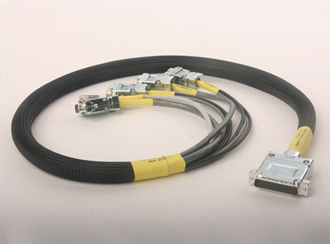The automotive manufacturing industry has witnessed the highest deployment of robotic automation. Welding, assembly, machine maintenance, material removal, and part transfer are among the assembly operations best suited for robotic automation. However, there is still a need to improve robot performance when it comes to tasks that require judgment and decision-making. The wiring harness is the nervous system of the vehicle and consists of multiple sizes and shapes of wire and connector assemblies. Next, the wire harness supplier will share it with you.
The wiring harness carries various control and power signals between the main control unit, the battery, and the various components of the vehicle. Assembling this cable with connectors requires a high level of skill and is most time-consuming. It involves pairing the cables with the appropriate connectors and securing the complex wiring structure inside the vehicle. Traditionally, wire harness for vehicles has been difficult for robots to install wiring harnesses in the body of a vehicle. Therefore, in order to simplify the complexities associated with wiring harnesses, several approaches are being used to simplify harness architectures and increase the capabilities of robots.

Wire Harness for Vehicle
A recent patent publication on modular wiring harnesses (US20190217794) has attracted global attention. Tesla's patent application claims easy assembly of wire harnesses during vehicle manufacturing. The patent also discloses a reduction in the overall length of the wire.
The car has multiple wiring lines for transmitting data and power separately. The additional cables make the harness heavier and more complex, making it difficult to feed into the various parts of the harness through the narrow aisles within the vehicle. Power over Data Line (PoDL) technology uses 100Base-T1 and 1000Base-T1 interfaces to power signals in parallel over a single unshielded twisted pair.
One of the main challenges of an automated harness assembly line is the gap in current robotics, which is why manual intervention becomes necessary to handle certain tasks. In assembly lines, robots face challenges in identifying the different wires in the loom and the right connectors to complete the assembly. Current tasks involving skilled assembly line workers include
Installing various lengths of terminated wires
Laying wires and cables through multiple sleeves and conduits
Application of fabric tape near branches
Taping various cables with tape
The above tasks are still non-automated because of the high level of skill required in identifying and assembling precision cable assemblies and their connectors. The combined skills of touch and vision are important to handle such delicate tasks, which have been by far the most difficult tasks for robots.
If you want to get more information about wiring harness for sale, please contact us.
Copyright © Xiamen New East Asia Electronic Enterprise Co. (NEAEE), Ltd. All Rights Reserved Sitemap |